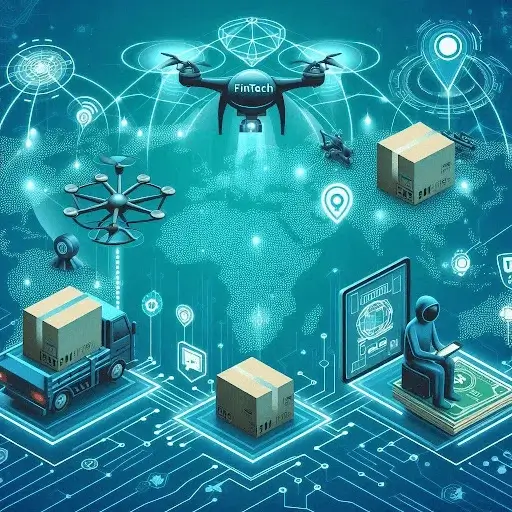8 Ways Fintech Startups Can Reduce Delivery Costs in 2025
Getting things from point A to point B may sound simple, but for fintech startups managing physical deliveries, it’s a balancing act of cost and efficiency.
These companies face challenges when distributing essential items, such as debit cards, customer kits, or compliance documents, to growing user bases without breaking the bank. Traditional solutions often miss the mark on affordability.

The good news? Smart strategies can help slash delivery costs while keeping service top-notch.
Let’s explore practical ways fintechs can optimize logistics and stay ahead.
1. Implementing Route Optimization Technology
Efficient routes save both time and money, which is crucial for fintech startups managing deliveries. Tools like route planning automation software simplify this process by calculating the fastest, most cost-effective paths in real-time.
It’s not only about speed, but also minimizes wasted fuel and unnecessary delays too. Smart startups can streamline logistics without stretching budgets by adopting these tools. Check out our comprehensive article on AI Interview Copilot for additional information.
2. Partnering with Local Courier Services
Local couriers often offer flexible, cost-effective options compared to larger logistics companies. They know the area better and can navigate traffic or hard-to-reach neighborhoods faster.
For fintech startups, teaming up with local services reduces expenses while maintaining quick delivery times for customers.
3. Leveraging Bulk Shipping Discounts for Onboarding Kits
When onboarding kits or other materials are shipped in batches rather than individually, costs drop significantly. Many carriers provide discounts on bulk shipping because it consolidates resources on their end, too.
Fintechs can save by planning shipments in groups instead of piecemeal approaches, ensuring affordability without compromising quality delivery.
4. Integrating AI-Driven Delivery Analytics
AI tools provide insights that human planning can miss. By analyzing data like delivery times, customer locations, and traffic patterns, fintech startups can uncover inefficiencies in their logistics process.
Analytics make it easier to fine-tune operations and reduce costs over time without sacrificing reliability. Find valuable tips and strategies in our article about Rise of Artificial Intelligence in Fintech.
5. Utilizing Multi-Modal Transport Solutions
Relying on just one method of transportation isn’t always the most cost-effective choice. Combining options like bicycles for urban deliveries, or trains for regional transport, can significantly cut expenses while increasing speed in specific cases.
Fintech startups benefit from a tailored approach that maximizes savings per delivery zone or region.
6. Setting Up Regional Fulfillment Centers
Centralized delivery hubs often lead to higher transportation costs as customer bases grow. By establishing regional fulfillment centers, fintech startups can position inventory closer to customers.
This approach shortens last-mile deliveries and reduces fuel usage, creating faster and more affordable shipping processes.
7. Encouraging Digital Alternatives for Physical Deliverables
Not every item needs to be shipped physically. For example, offering virtual onboarding materials or digital debit cards can eliminate delivery costs entirely for some services.
Fintech startups that prioritize these options not only save money but also provide convenience for tech-savvy customers who prefer immediate access over waiting for mailings. We have also covered What is the Cost of SDR on our website.
8. Negotiating Custom Shipping Rates with Carriers
Startups don’t have to settle for standard shipping rates. By negotiating custom contracts directly with carriers, fintech companies can secure better deals tailored to their specific delivery volumes and needs.
Building strong partnerships often leads to reduced per-shipment costs and long-term savings as the business scales up.
Cutting Costs Without Compromising Service
Reducing delivery costs does not mean you’re sacrificing quality, speed, or reliability. By simply embracing smarter strategies like optimizing routes, partnering with local couriers, and leveraging bulk discounts, fintech startups can streamline operations while managing to stay budget-friendly.
It is all about working smarter for greater efficiency. These methods help balance customer satisfaction with sustainable growth in a competitive market.
The logistics landscape keeps evolving quickly, but taking proactive steps today ensures your fintech business stays competitive tomorrow! You can visit Fintechzoom.com for more trending posts.




